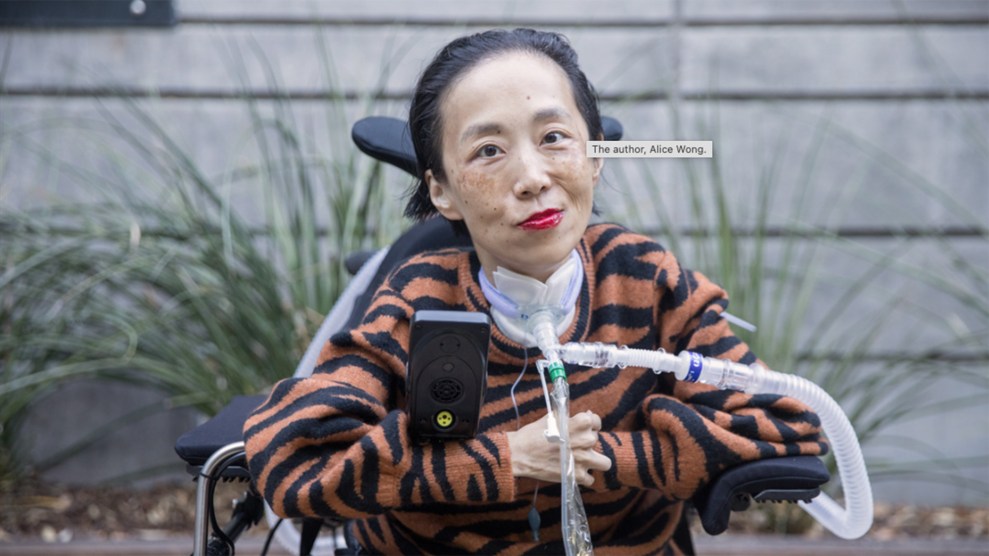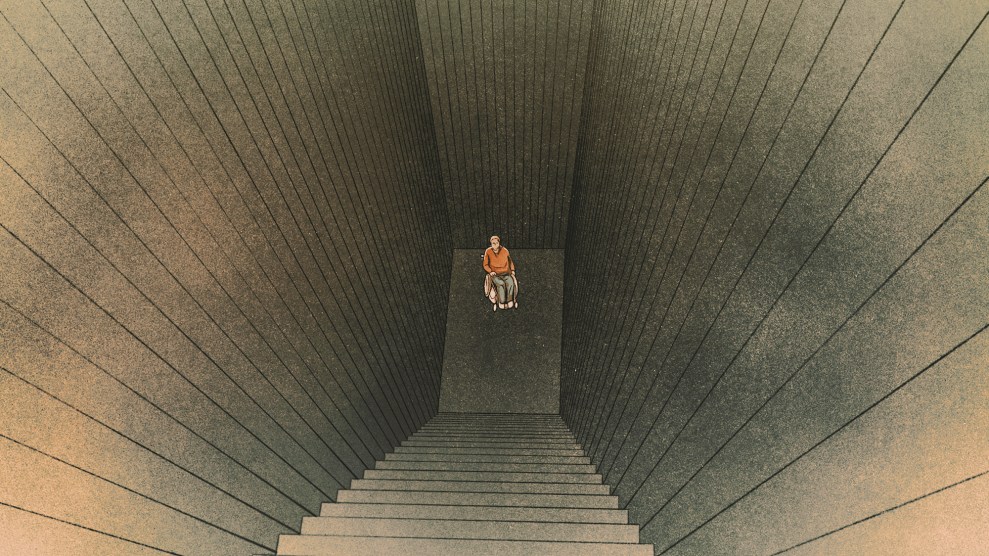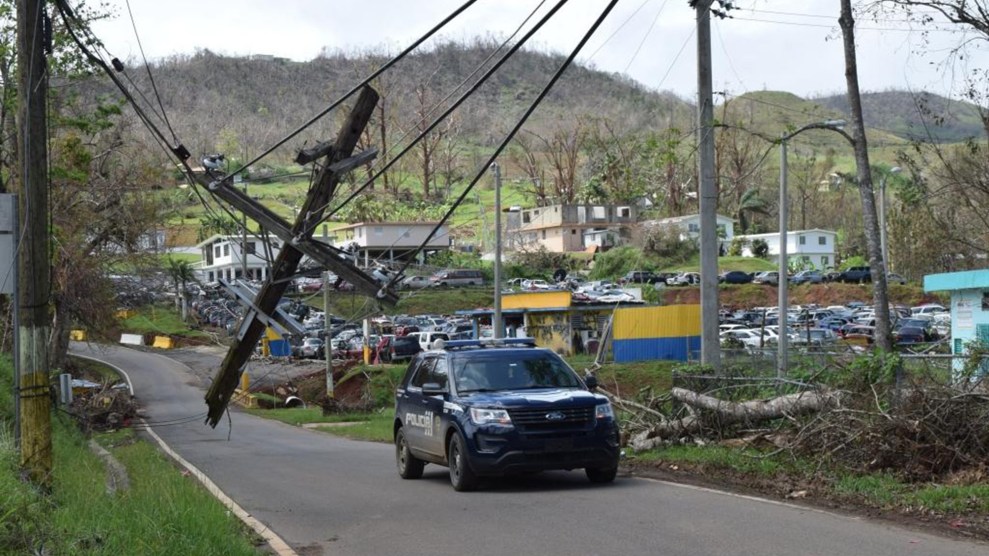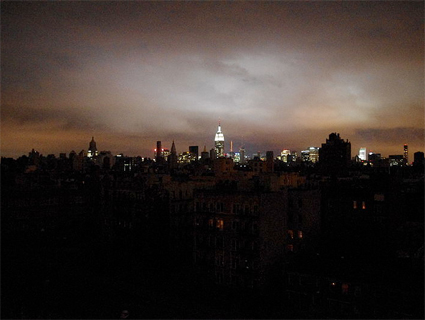
The author, Alice WongEddie Hernandez
This story was originally published by High Country News and is reproduced here as part of the Climate Desk collaboration.
The terms atmospheric river and bomb cyclone were not in my vocabulary until recently. During the first two weeks of 2023, however, the San Francisco Bay Area was deluged with a series of storms. I am a disabled person who depends on power to live. When I came home after four weeks in the ICU last summer, I was tethered to a feeding machine that pumps food into my stomach, as well as to a ventilator that’s attached to a hole in my throat, among numerous other devices. The stakes for potential harm during a power outage have exponentially increased. My anxiety, vulnerability, and fear are real.
Jan. 3, 2023, 10:44 p.m. Texted my caregivers on what to do if a power outage happens while I am in bed tomorrow night. Air mattress will deflate, and I will immediately need to be transferred into my wheelchair. I will need to use my backup electric batteries for medical devices such as my suction machine, since I need to suction hourly every day.
Jan. 4, 10 a.m. Mentally calculating how much battery life some of my machines need before needing to use my backup electric battery. My other devices do not have a built-in battery.
1 p.m. Bookmarked the link to Pacific Gas & Electric’s (PG&E) Outage Center, so I can look up all the outages by location and report one if it happens in my neighborhood.
1:30 p.m. Asked my father to make sure my backup electric batteries are fully charged.
2 p.m. Let my morning caregiver leave her shift early so that she can get home safely before the brunt of the storm arrives. Did not hydrate today, because my nighttime caregiver will not arrive until 9 p.m. Worried for her, and worried for me. I hope I don’t get a full bladder.
3:02 p.m. Tweeting information about the storm. Noticing that many weather-related Tweets do not have alt text in graphics and captions in videos that contain vital information about the storm, evacuations and road closures.
3:30 p.m. Watching the news and scrolling Twitter. My father, who thinks I’m being an alarmist, said, “The news always exaggerates the dangers.” After living with me for decades, he still doesn’t understand.
6:01 p.m. Preemptively charging some of my devices, topping them up with power tonight, just in case.
6:19 p.m. Uh-oh. My bladder feels a little full. Let’s see if I can hold on until 9-ish when my caregiver arrives. I hope she makes it.
7:57 p.m. Caregiver texted me saying she won’t be able to arrive until 10:30 due to a delay from her other job. Bladder, don’t fail me now! Can’t wait to be catheterized.
10:18 p.m. Praise be, my caregiver arrived! Time to pee. Sweet relief!
Jan. 5, 2:15 a.m. Time for bed. Feeling thankful and safe that my caregiver is here for her overnight shift.
Whether they are caused by wildfires, earthquakes, hurricanes, flooding or storms, power outages are a life-and-death issue for many of us. Time and time again, disabled and older people are left behind or not prioritized in emergency planning. When a brutal winter storm hit Buffalo, New York, this past December, the mother of a 1-year old had to manually ventilate her child due to a power outage.
Nineteen patients from a nursing facility in Castro Valley, California, had to be rescued due to flooding on Jan. 31 during the first atmospheric river that hit the Bay Area. According to the San Francisco Chronicle, “Two people could not communicate and were unable to leave their wheelchairs, so deputies and paramedics ripped seats out of a van to transport them…Crews had to cut the building’s power before mopping up, which would have meant shutting off medical devices and putting the seniors at risk.”
Where is the infrastructure and planning that won’t force paramedics to rip the seats out of a van just to make it accessible? At the minimum, city agencies and first responders should have access to wheelchair-accessible vehicles for evacuation and rescue efforts.
This is not the first time I have had to worry about and plan for power outages. Living in California—in the middle of a climate crisis—we are all bombarded by advice and information. Much of it, however, is not feasible or even possible for poor disabled and older people to follow. People cannot stock up on medications if they are uninsured or underinsured. And recommended mitigation efforts—such as unplugging all appliances during an outage and purchasing equipment like generators—are out of reach financially and physically for many of us.
Systemic problems with emergency preparedness are not a new issue. Federal, state and local authorities continue to fail disabled and older people. In the event of emergencies or natural disasters, disabled people have been hospitalized or institutionalized due to a lack of accessible shelters, accommodations and housing. Witness what happened in the aftermath of Hurricanes Harvey, Irma, and Maria.
A 2019 report from the National Council on Disability (NCD) put it bluntly: “As a result of unnecessary institutionalizations during and after disasters, people with disabilities often go unaccounted for, families are separated from loved ones, working individuals with disabilities often become unemployed, and students with disabilities are often excluded from returning to school with their peers.”
Likewise, a 2021 statement by the NCD notes that “history has repeatedly shown that people with disabilities and others with access and functional needs in emergencies are frequently overlooked or have their needs minimized, despite the urgency that surrounds the need to account for people with disabilities in all phases of emergency management, including mitigation, preparedness, response, and recovery…A vital part of effective planning is an understanding of the diverse populations that make up the community, including their strengths and their weaknesses.”
Meanwhile, however, disabled and older people continue to die—and the state is complicit in their deaths.
Those who harp on individual personal responsibility during times of crisis are overlooking the deeper structural barriers that keep disabled and older people especially vulnerable to natural disasters and emergencies. It’s true that utility providers in California have some programs designed to help those most impacted by power shutoffs. But I often think of my late friend, Stacey Park Milbern, a dedicated community organizer with #PowerToLive, a grassroots campaign aimed at PG&E’s inadequate response to disabled customers during wildfire-related power shutoffs in 2019.
In an interview with KQED, she said, “A lot of activism work is trying to shift people to think about interdependence rather than independence. I believe if you view the needs of the most marginalized people impacted by an issue, then ultimately the entire community benefits.”
Hopes and prayers are not enough. Checking on your neighbors and families is not enough. Legislation such as the REAADI for Disasters Act is not enough. Passing a law will not immediately render aid to the people who need it the most. I don’t have the solutions, but here are a few suggestions for utility companies in California and nationwide:
- Fund the work of local disabled community organizers and activists focused on energy equity and justice.
- Increase funding and capacity of regional Disability Disaster Access and Resource Centers in California.
- Hire a team of disabled people tasked with policy, programmatic and structural improvements within the company.
- Recruit and retain disabled employees for leadership positions in accessibility, infrastructure, customer relations, communications and community outreach.
- Increase funding and strengthen public education campaigns about Medical Baseline Programs in partnership with local organizations, with the goal of registering as many eligible people as possible. Campaigns should include other related programs and be ongoing and proactive.
- Battery and generator rebate programs should be open to any customer regardless of income, provide 100% reimbursement, and have an application process with a low administrative burden for their customers.
Utility companies can well afford these changes; they make billions in profits every year. PG&E’s gross annual profit was $16.942 billion, with revenue of $21.556 billion, for the quarter ending Sept. 30, 2022.
I honestly do not know what I will do if a multiple-day power outage happens in my area. I worry for myself, and I worry for all of us. Community care, structural changes, and centering leadership by those most impacted will help provide the way forward to a future where no one will ever be left behind.













